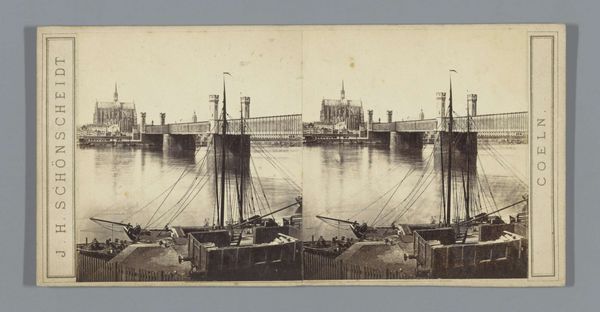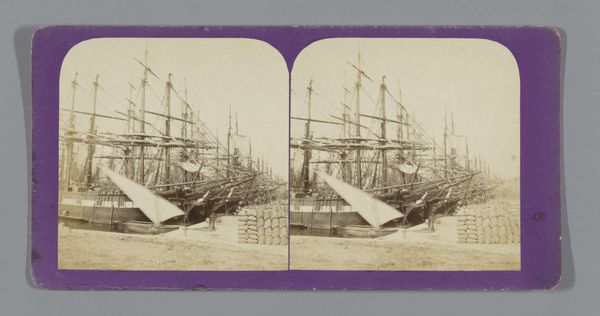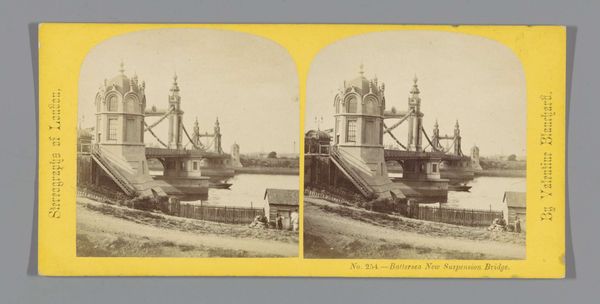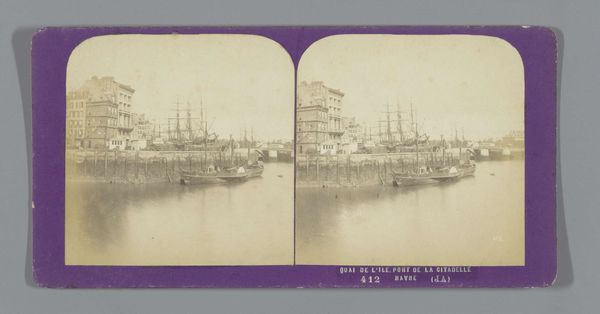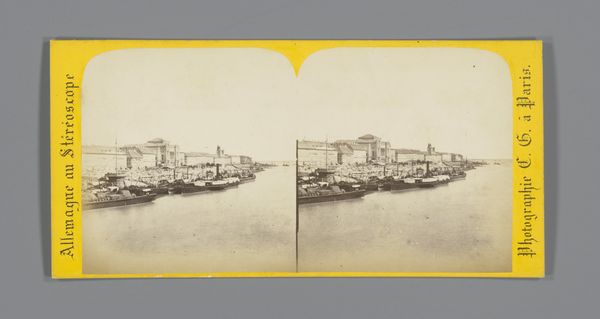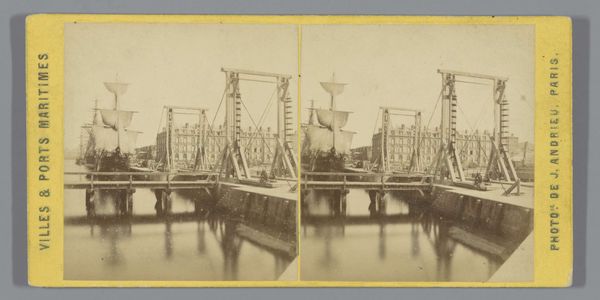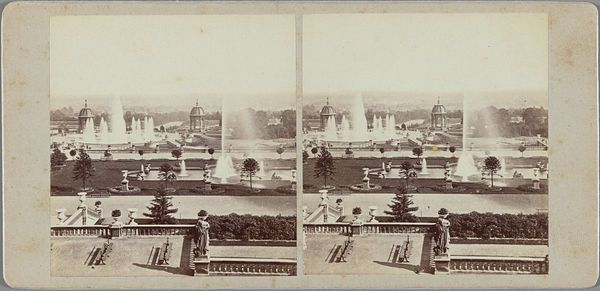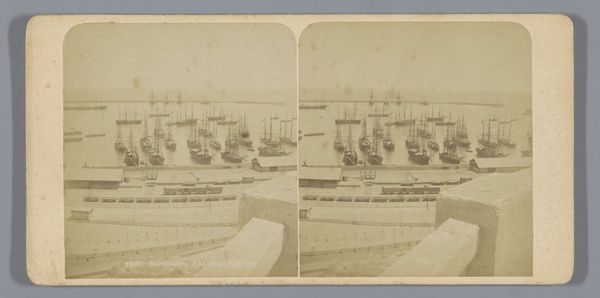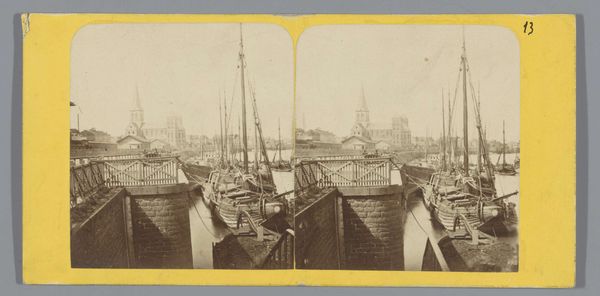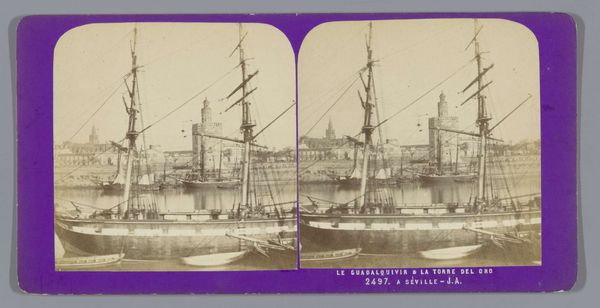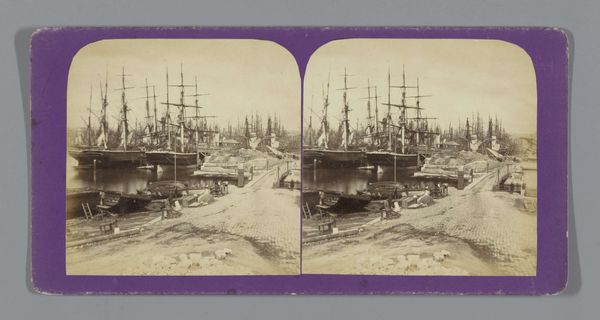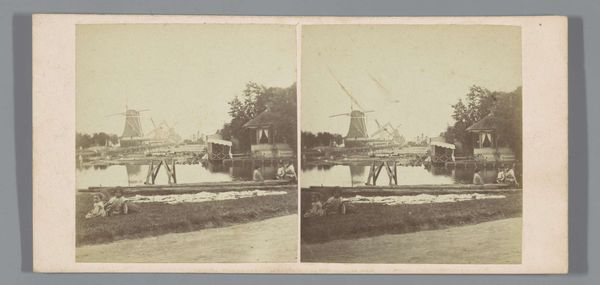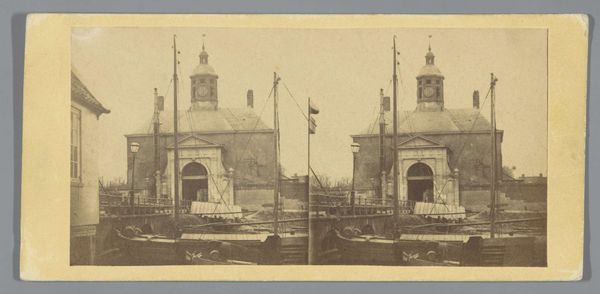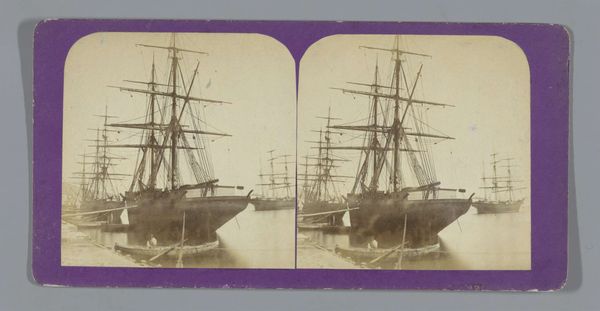
Gezicht op de Dombrücke te Keulen met op de achtergrond de Dom van Keulen c. 1860 - 1870
0:00
0:00
Dimensions: height 85 mm, width 170 mm
Copyright: Rijks Museum: Open Domain
Curator: The artwork we're observing is a gelatin silver print entitled "View of the Dombrücke in Cologne with the Cologne Cathedral in the Background" by Anselm Schmitz, dating from around 1860 to 1870. Editor: It's remarkable, this study of texture and line. The composition itself is wonderfully balanced, between the delicate tracery of the cathedral and the solid geometry of the bridge. Curator: Consider the implications of its creation during this period. Photography was becoming increasingly accessible, yet the subject matter—a major construction project like the Cologne Cathedral alongside a key bridge—speaks volumes about civic pride and progress, about the transformation of labor into landmarks and points of navigation for all types of commodities. Editor: True, but focusing on that craftsmanship draws the eye to the almost hazy softness of the image itself, quite different from sharp contemporary photographs. See how Schmitz used the light, to almost idealize and monumentalize the gothic forms—to almost, mythologize it? Curator: Absolutely, myth-making was part and parcel of such images during the period of Romanticism, but I’d also add, looking at the working boats along the water's edge reminds us that these images served a pragmatic purpose, capturing trade and travel during its age of expansion. It gives form to our notion of the era’s mercantile power. Editor: Still, let’s not overlook the visual experience itself, that the detail in the bridge’s stonework contrasts effectively with the serene water, and that boat! These elements of contrast help draw the eye upward towards the Cathedral as a central focal point, while emphasizing its grandeur, in shape and dimension. Curator: That said, I'm drawn back to the materials. Silver gelatin printing allowed for multiple reproductions, making the image widely available—almost a proto-postcard. Think of this in contrast to painting and it changes the artistic, social, and consumption values for all viewers. Editor: I agree! It's a fascinating perspective. The dialogue it stages between light, dark, labor, structure, gothic, and industry is something that transcends any fixed interpretations. Curator: Indeed, Anselm Schmitz captured not just a scene but a society transforming its material surroundings and its culture as a whole.
Comments
No comments
Be the first to comment and join the conversation on the ultimate creative platform.
